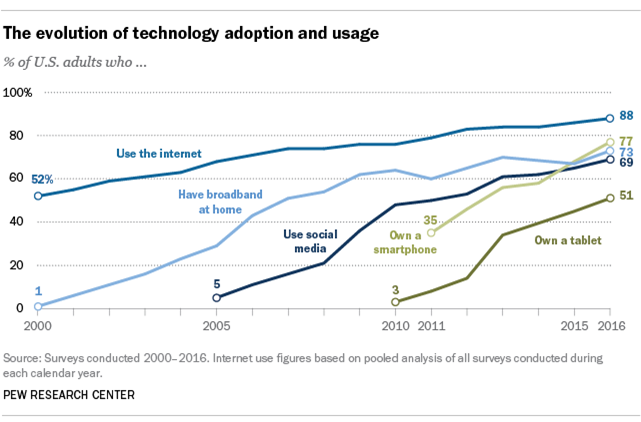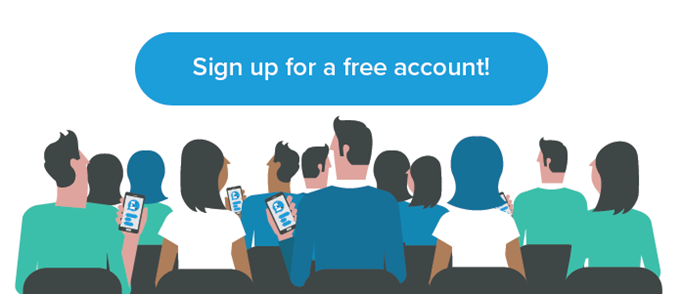There is a growing demand for everything to become instant within our lives. Instant gratification is a need that both employees and customers alike are developing. This can mean anything from faster career development, a quicker purchase or instant feedback and communication.
Why has this trend come around?
Technology has been a driving force as to why we expect things to be instant. By having a tool that can take away complexities or a longer process is a major benefit to our increasingly busy lives. Technology has changed the way we work and our expectations. From communicating with someone straight away (regardless of location), to quicker responses, instant purchases and real-time feedback.
The graph below by Pew Research Center shows the increasing adoption rate of technology with close to "80% of Americans now owning a smartphone".

You might say that there is a negative effect around this impatient behaviour because we need to take time to evaluate situations. But in many instances technology is allowing us to focus on important tasks and to evaluate data, as well as create shortcuts, saving us time and ultimately saving money. If technology can do it faster, smarter and report it back to you – why would you do that job yourself?
What does it mean to your workplace?
The importance of digital strategies and technology has become fundamental in both a business and educational sense. The millennial generation have grown up with an abundance of devices. The smartphone is a device that now every employee or student carries in their pocket. It is now the go-to tool. Be that for checking your calendar, ordering something online or for messaging and communicating with someone.
Because of this, organizations should embrace this technology and use it to their advantage. By using apps and communication platforms, you can find out from your employees what is important to them. As well as unlocking insightful data on employee development and understanding.
This insightful data is a major benefit, but apps can also improve the experience as well as outcomes. Smartphones can be used to engage your employees in the moment, rather than being a distraction. If employees feel like their part of the experience and can participate, they are more likely to recollect the information and have a better experience.





